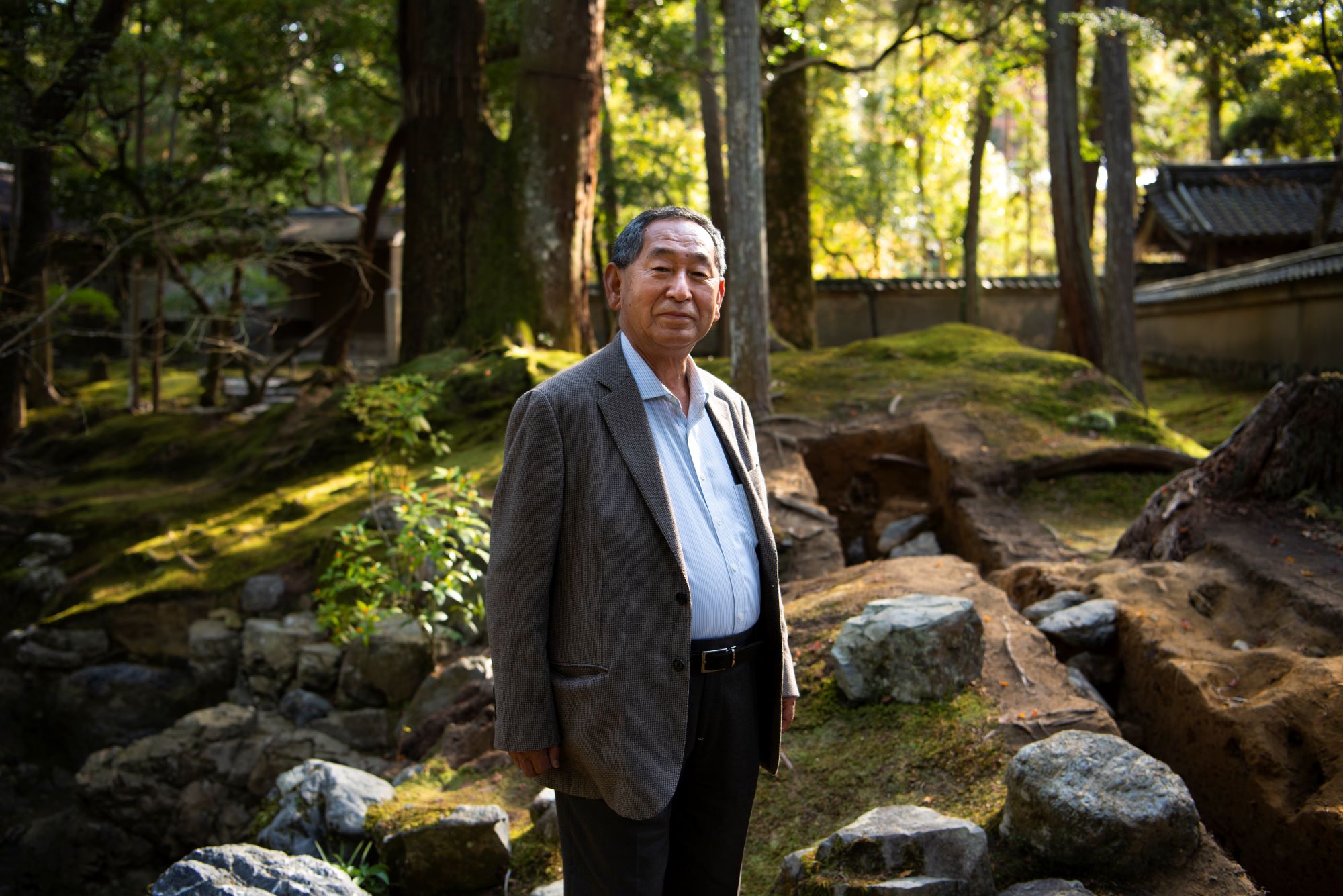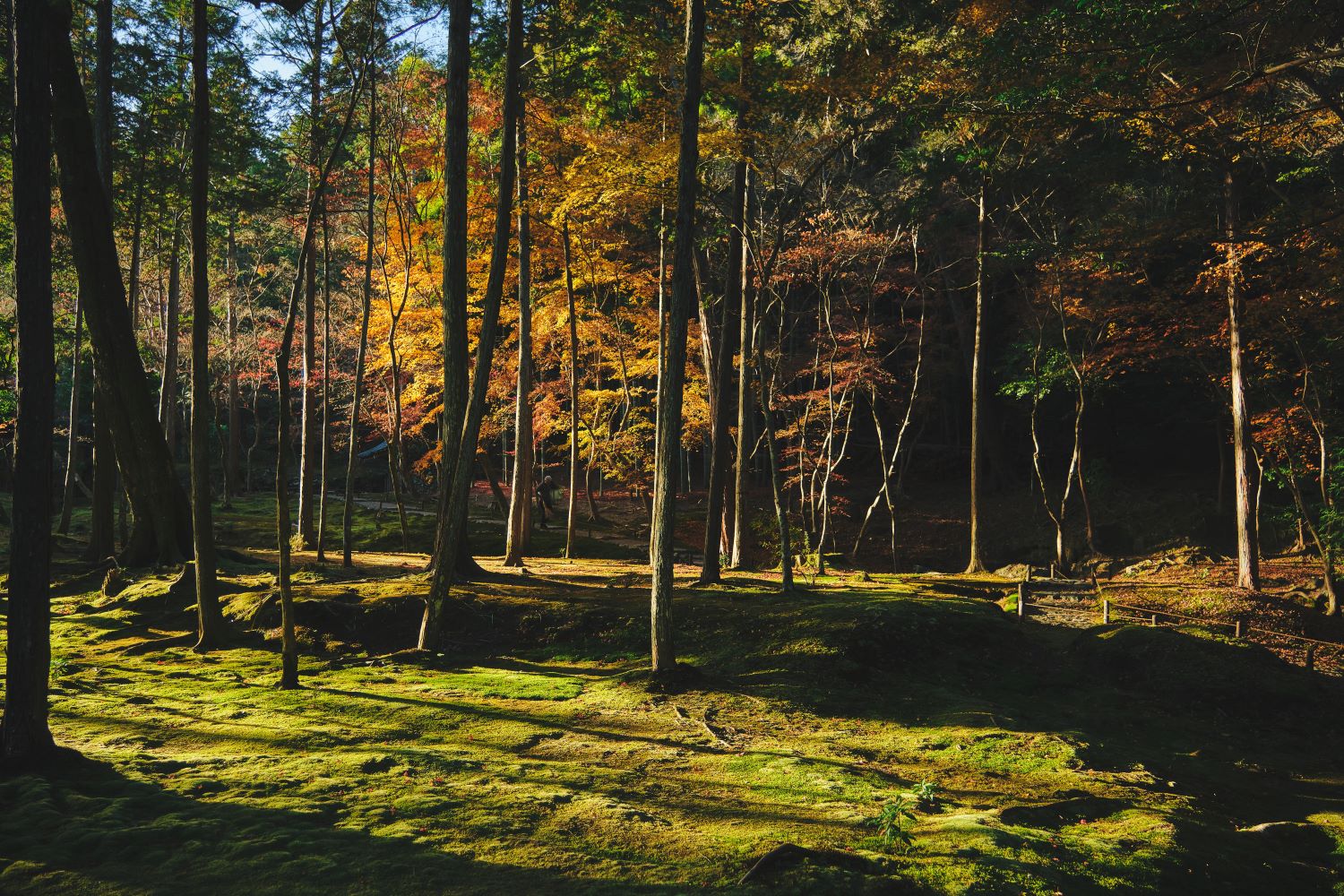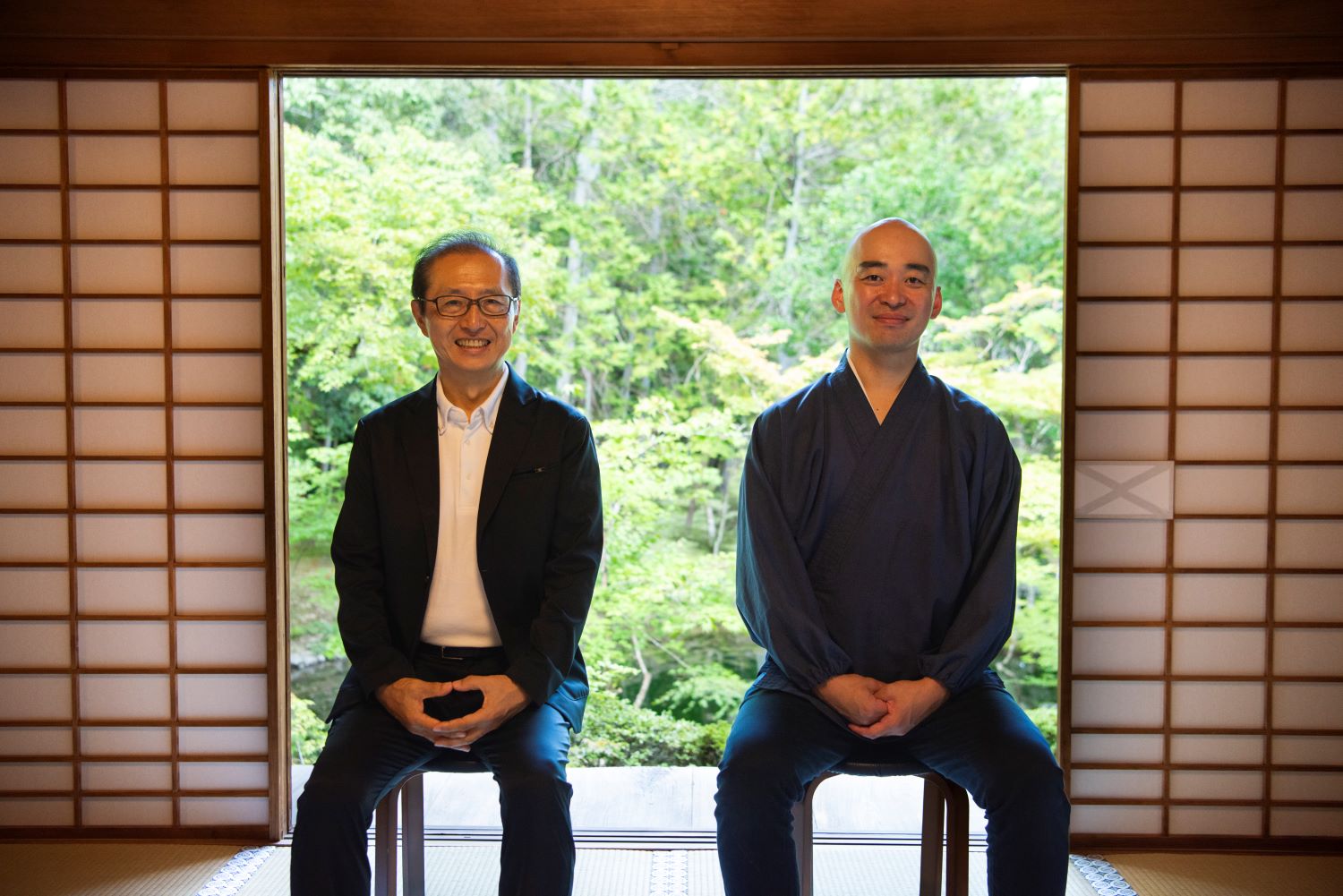2025.3.14
People Preserving Saihoji for Future Generations “Conversations with the Garden”
Gardeners vol.2
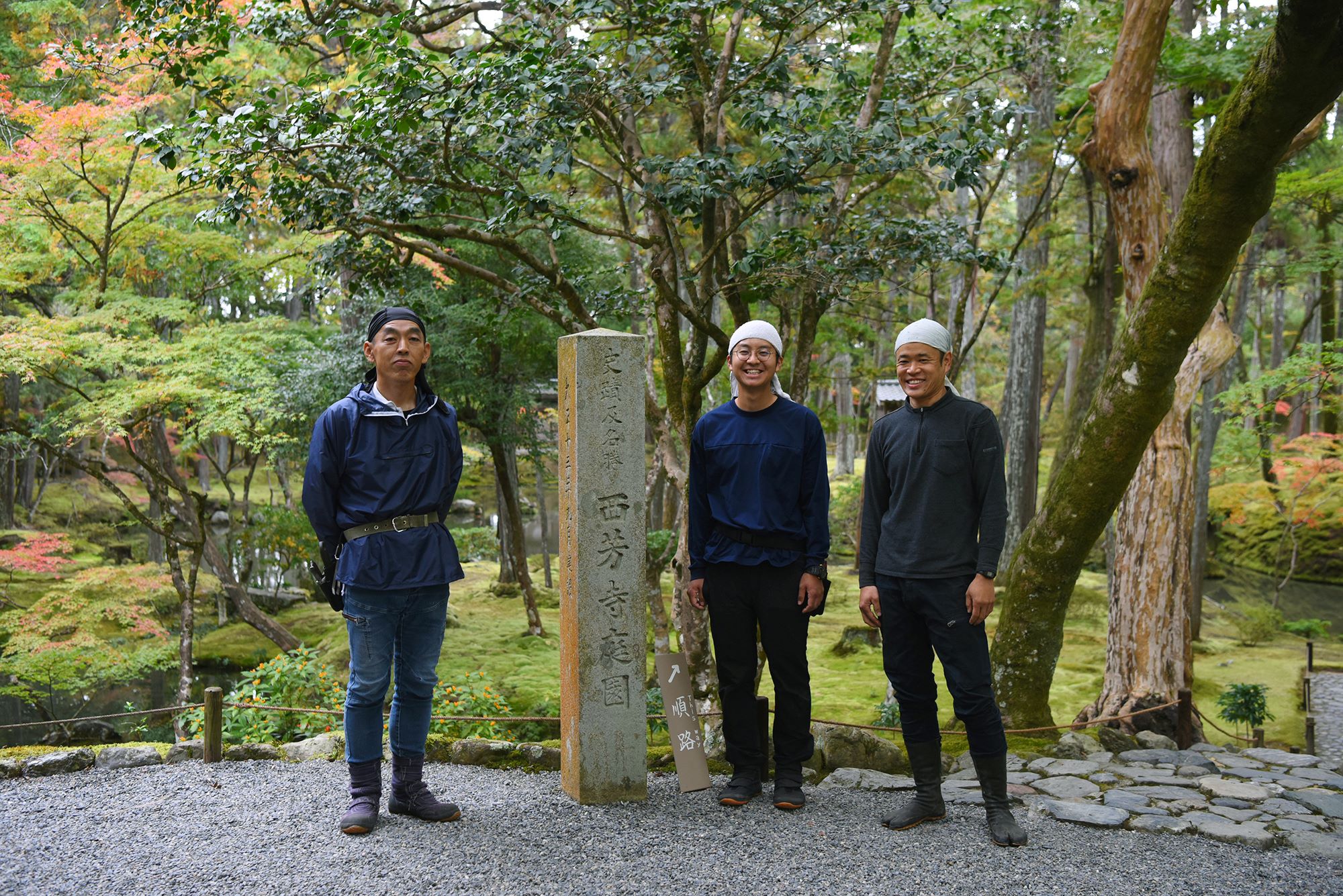
Saihoji Temple is known worldwide for its “Moss Garden.” In order to welcome visitors each day, many people support the temple and its garden with their expert work. In this series, we spotlight the work of those involved in Saihoji, and we will explore what it means to support culture and connect to history.
For over half a century, Saihoji has been employing its own dedicated team of gardeners to tend to the temple grounds. In the previous interview, we spoke to Miyazaki Koji of the gardener team about the things he has learned and noticed through his work. In this issue, we will be asking him to share more details about the work of the gardener team, focusing particularly on how they deal with the scorching heat of summer and bitter cold of winter.
Miyazaki Koji
Originally from Kobe City in Hyogo Prefecture, Miyazaki joined a landscaping company and gained experience maintaining parks and taking care of roadside trees before joining Saihoji’s gaerdener team in 2015. Though he mainly focuses on broom work for the moss, he handles all aspects of garden maintenance, including taking care of plants and making bamboo fences.
Responding to Changes in the Environment With Trial and Error
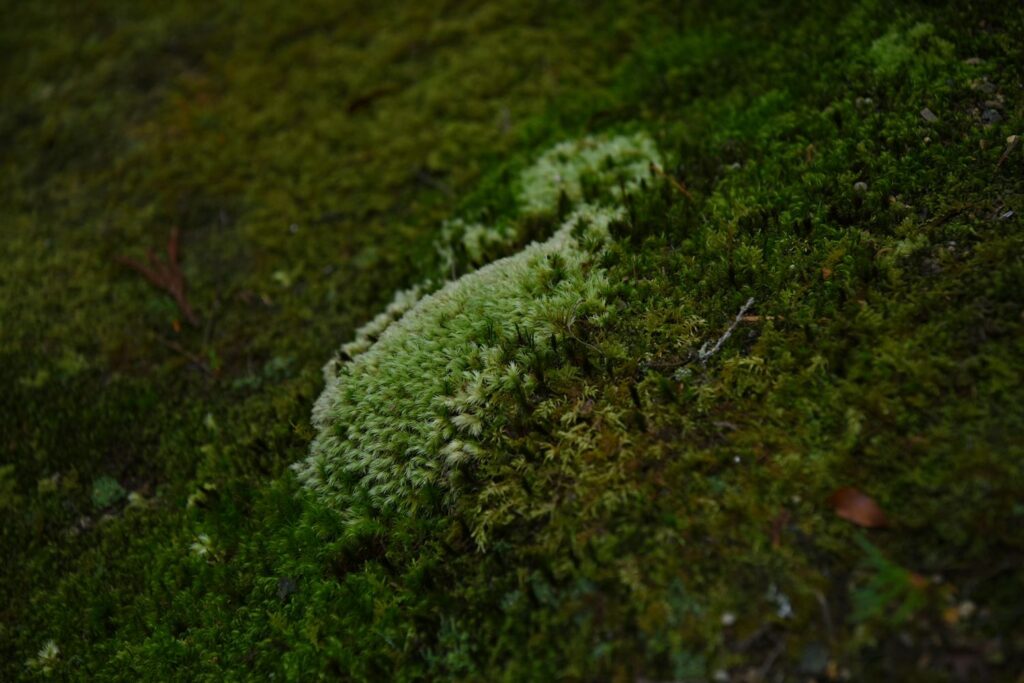
ー We experienced record-breaking heat in 2024. How was the garden affected?
We were worried about the damage to the moss, but the impact appears to have been rather minor. The weather’s been quite warm this year (2024), even in November. It’s usually much colder around this time of year, and the moss becomes less active, so you could say that the warmth is extending the moss’s period of activity. Now that the summer has passed, we also get rain, allowing the moss to replenish its moisture, so I think it’s in pretty good shape.
On the other hand, we’ve had a lot of tropical nights this year. When we talk about the heat of the summer, many people think about the peak temperatures, but what you actually need to pay attention to are the lows. For us humans, it can be difficult to sleep if it’s too hot at night, and it’s similar with moss. It needs the nights to be cool. That’s why we’ve recently started sprinkling water on the paths in the garden. It cools the air and helps the moss cope with the tropical nights.
ー Do changes in the environment have a big impact on the moss?
Even a slight change in the environment can significantly alter the balance in the garden. For example, there was a major typhoon in 2018 that knocked down over 200 trees on the temple grounds. With the trees gone, the mossy areas were exposed to more sunlight, and the ground turned a reddish, burnt color. The mosses that had been growing around those trees changed color and weakened.
On the other hand, we started to see some different types of moss popping up here and there. We hadn’t seen these moss varieties before. They must have been better suited to the changed environment. Ten years from now, we might see some major changes around here. Discovering such changes is one of the things I look forward to as I go about my daily work of tending the garden.

ー When you discover a new type of moss in the garden, do you do anything to help it?
We don’t do anything out of the ordinary like transplanting the moss or watering it, but we do pay attention to the way we sweep the grounds. Sweeping too hard with a stiff broom can damage the moss that had only just started to grow.
No matter how gently you sweep, some of the moss will get scraped off, so we avoid sweeping too much in areas where the moss is still growing. We even allow some fallen leaves to remain on the ground. Not only that, but if you take the fine moss shavings that have been scraped off by the broom and return them to the soil, there’s a chance that they become like seeds and germinate. So, if there are any bits of moss among the fallen leaves we’ve swept together, then we make sure to return them to the soil. We carefully spread the pieces around areas that don’t have much moss growing yet, in the hopes that they will grow from there.
When new moss grows, we must not use the same methods of cleaning as before. We must not simply carry on doing what we’ve done in the past. Instead, as people who look at and observe the garden every day, we must carry on a dialogue with the garden, practicing trial and error from day to day.
Not Objects, But Living Beings
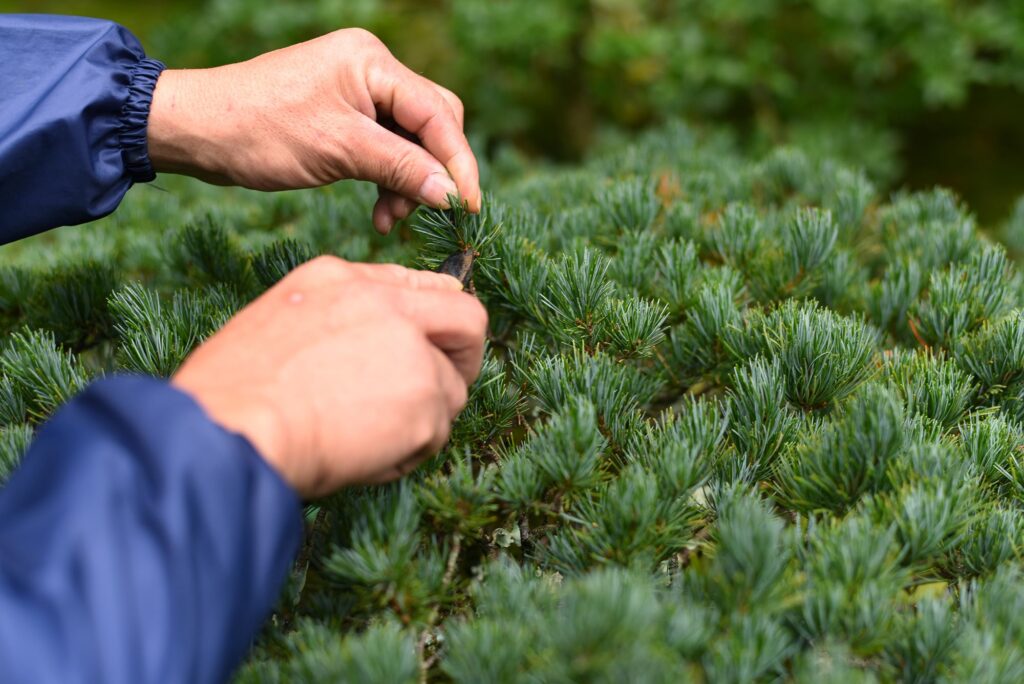
ー I’ve been told that you take a break from sweeping during the winter. Why is it necessary to take a break?
The greatest stressor for moss is to be stepped on. Unfortunately, if you’re going to sweep and clean the mossy areas, stepping on moss is unavoidable. For that reason, we set aside a time period where nobody will step on the moss so that the moss can rest. On top of that, during the colder times of the year, frost will form on the moss. Stepping on the moss when it’s frozen will crush the moss on a cellular level, so we do our utmost to avoid going into the mossy areas.
It’s not the case that sweeping and cleaning is forbidden, simply because it’s winter. Moss is also a living being so we feel bad about stepping on it all the time. Maybe it hurts to be stepped on when it’s frozen. With such thoughts in mind, we decided to designate a time during the winter where we take a break from sweeping and cleaning the moss.
To tell you the truth, when I first started working at Saihoji, I didn’t have this mindset. I didn’t think things through from the perspective of the moss. If someone said, “We don’t sweep in the winter,” then I simply did as I was told. I didn’t even think about asking the reason why, because at the time, I saw moss as an object. I see things quite differently now.
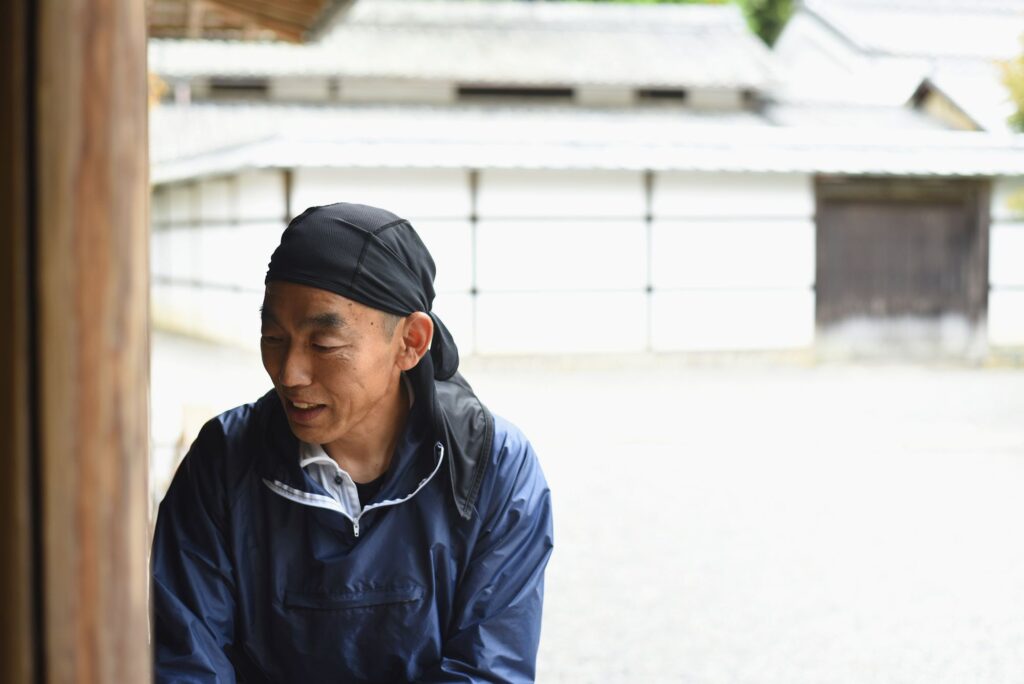
ー What changed your outlook?
It started when Mr. Fujita—the vice head of the temple—said he wanted me to think about and reflect on my way of looking at the garden. I tried to put down in words how I should approach this garden that I look at and walk around in every day. It was then that I realized that moss is not an object, but a living being.
When I take care of the moss, I used to think it was enough to simply sweep away the dirt and leaves until it looked nice. But ever since I started treating the moss as an organism with a life of its own, my attitude has changed. I now understand that this is also the reason why Saihoji keeps a team of dedicated gardeners.
ー Since you started treating the moss as a living being, have you ever had a moment where you find yourself wanting to speak to the moss?
Perhaps I had such a moment when I saw the sorry state of the moss after it had been ravaged by birds. In winter, birds come and dig up the ground in search of worms and insects to eat, and the entire mossy area gets torn apart. I felt sorry for the moss, with all the bits and pieces scattered about, and I felt an urgent need to do something to fix it. If we had simply left it in that state, then the dry winter air might dry up the moss, and the wind could blow the pieces away.
The poet Takahama Kyoshi wrote the following poem in Saihoji.
In a Zen temple
a little bird pecks
at the moss.
I think he might have been trying to describe a peaceful scene, but as a gardener, I can’t help but be concerned about the moss.
ー What kind of work do you do while you’re taking a break from sweeping the garden?
We mostly take care of the areas surrounding the garden. Last year we replaced the bamboo fence. It’s a (i)kenninjigaki(/i)-style fence. At Saihoji, we do everything ourselves, starting from cutting the bamboo that we use to make the fence. It takes time, but we consider it important to recycle resources by using the bamboo from within the temple grounds.
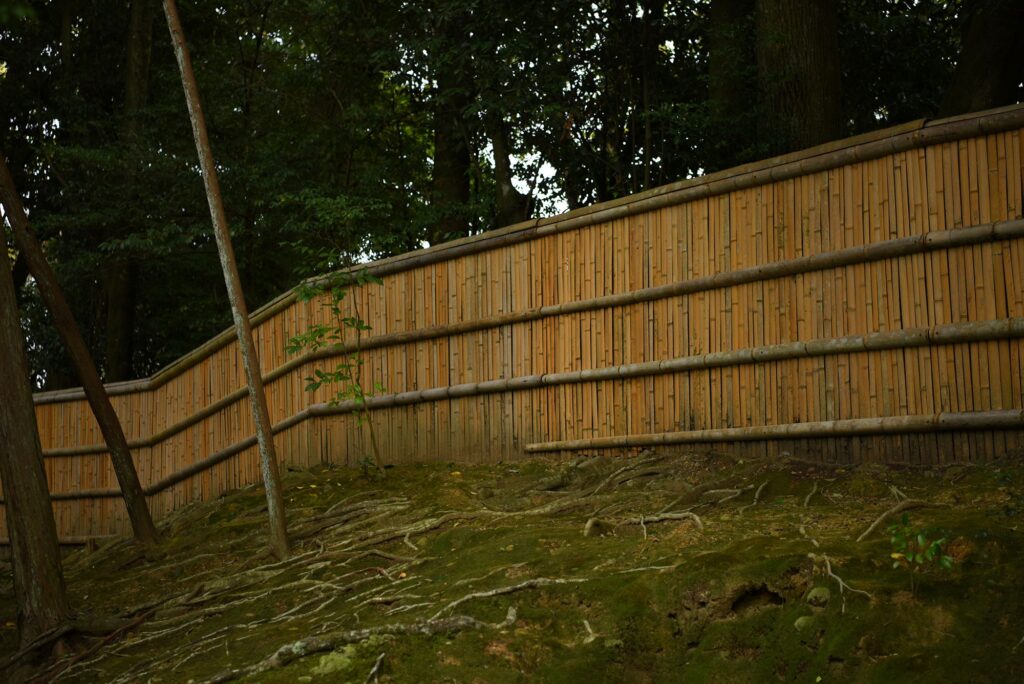
ー Did you have to do anything special when constructing the fence?
When you put together a kenninjigaki-style fence, you need to align the vertical slats (tateko) so they fit together with the horizontal ones (oshibuchi), but just like human beings, each bamboo plant is unique, so the sizes and nodes are all different.
When we prepare our building materials, we split the bamboo so that we get straight pieces, but some of the stalks will insist on bending. As we line them up one by one, we have to decide which ones fit and which don’t. It doesn’t bother me anymore, but in the beginning, it took a lot of time. It also happened several times that I would go through the effort of putting a section together, only to step back and see that it was crooked and had to be redone.
Artificial bamboo is all uniform, which might make it easy to make such a fence, but we believe that there is surely something good about building with natural materials, so we carry on using bamboo that has grown on the temple grounds at Saihoji. And so, we never make the same bamboo fence twice.
ー What do you find most attractive about the garden during the winter?
In the midst of a bitterly cold winter, the entire garden exudes a tense, frigid atmosphere. Especially in the early mornings, the Golden Pond freezes over, and the koi carps lie still in the water. It is as if all life in the garden—from the moss to the trees, and even the creatures living in the pond—ceases its activity and goes to sleep.
Moss is evergreen, but in winter it goes into a dormant state and shrinks down to endure the cold. I love the view when, in the midst of all this, a ray of sunshine gently pokes through and lights up the mossy ground. The sunlight comes through in the summer as well, but there’s something different about the gentle light of winter.
And then there are the snowy days. More so than the thick blankets of heavy snowfall, I prefer a light dusting of snow that quickly blows in during the night. For just a few hours in the morning, you can see a beautiful view of the garden where the moss is only faintly visible beneath this sheer layer of white. And before you know it, the snow has vanished. It is a truly precious sight.
See for Yourself, Put Some Thought Into It
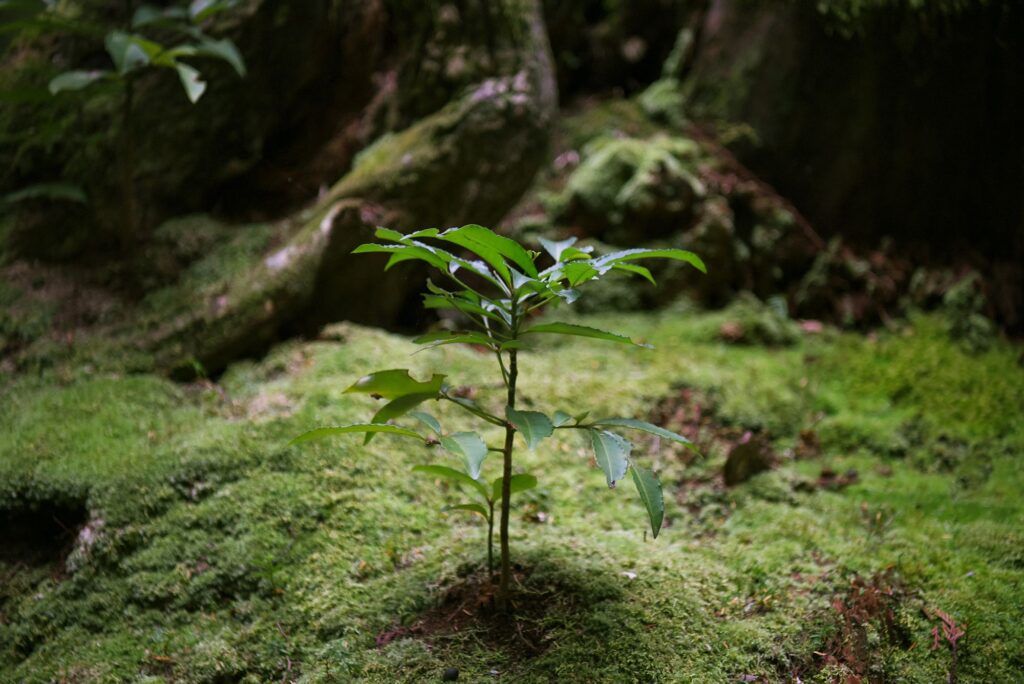
ー I hear you have a new member in the gardener team.
Yes. As of January 2025, Mr. Ogaya will have been with us for a year, including his probationary period. It’s my first time acting in the role of a teacher, so I’m always fumbling about as I search for the best way to teach.
Every day I ask myself, what can I do to build him up into a fully qualified and capable gardener? I don’t think it’s right to simply have him blindly rack up experience points with no direction. Neither is it enough to follow a manual from start to finish. We need to change the way we work depending on the time and place. We need to be able to see things for ourselves, think and act. Completing a set of fixed tasks is merely a stepping stone. Beyond that, I want him to think for himself and grow further by learning from others.
ー Is there anything you particularly focus on when you’re teaching?
In the morning, I give general instructions on the places we are cleaning for the day, but I stop short of giving specific instructions. For example, if we’re cleaning the gravel areas, I will mention that both the bamboo broom and the leaf blower are fine to use. I then look to see which he chooses. When cleaning areas outside the garden, such as the gravel, a leaf blower is very quick and effective. A bamboo broom, on the other hand, takes more time, but if you focus on removing the trash without moving the gravel, it serves as practice for when you clean the moss.
My hope is that he will not merely do as he is told, but also learn to pick up on the intention behind such instructions.
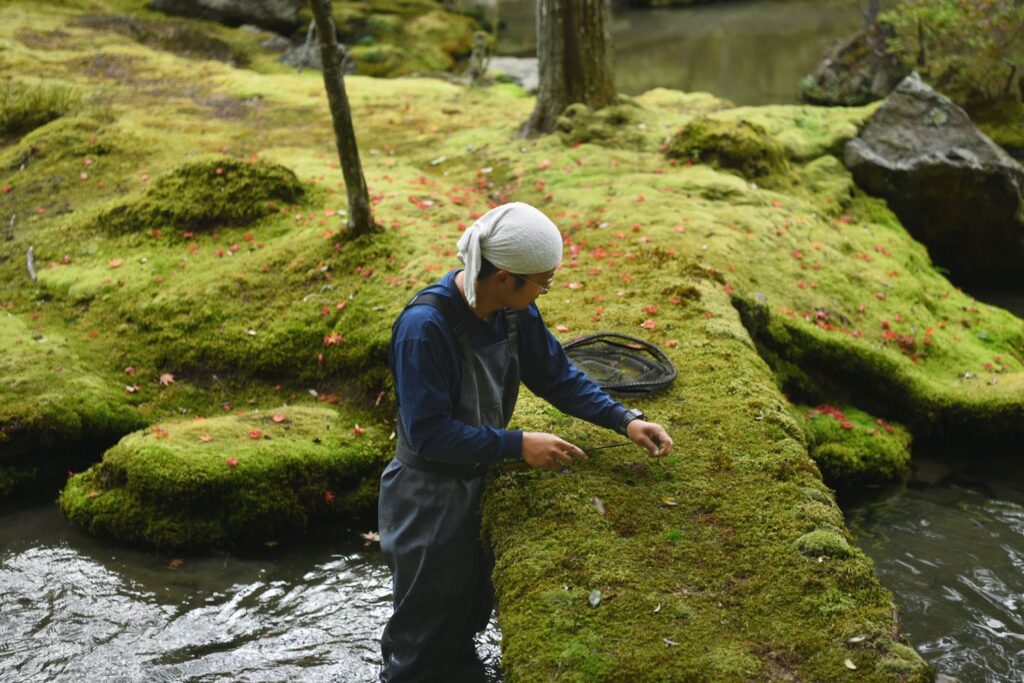
ー In closing, please tell us what you consider important in your work as a gardener.
This work is not simply about completing tasks. You have to put some thought into it.
If we just take the cleaning of gravel, there are countless things you can think about. If some gravel ends up mixed in with the trash when you’re done sweeping, take out the gravel and bring it back. Otherwise, the amount of gravel gradually decreases, and you will eventually have to add more.
Similarly, if you always collect the fallen leaves in the same spot, then you will end up with certain spots where the layer of gravel is thinner, and if you always sweep in the same direction, the gravel will never be smooth. To prevent puddles from forming when it rains, we create channels for the water to drain through, using height differentials. We are constantly thinking about these things and changing the way we clean, depending on the situation on any given day.
It may seem like we’re being overly meticulous, but it’s actually the ultimate form of efficiency. If you painstakingly take care of the gravel every day, then you never need to add any gravel, and the rain will never cause it to come undone. Instead of getting caught up chasing short-term efficiency, we should think about what it truly means to avoid waste. I believe that the spirit of Zen lies at the root of this approach.
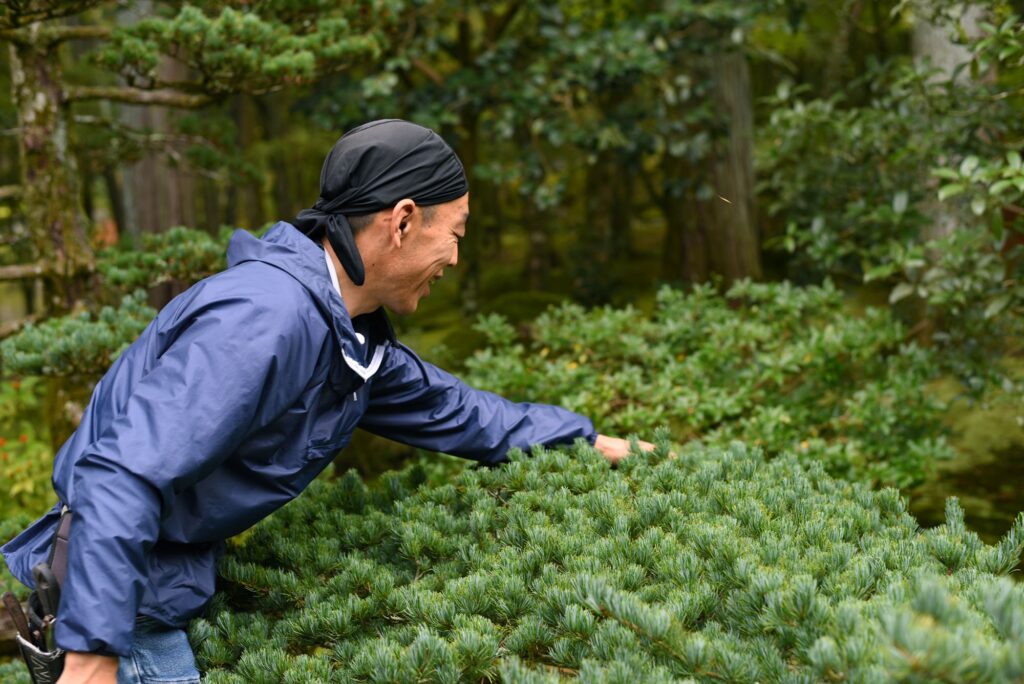
Edited by: MIYAUCHI Toshiki
Written by: HOSOTANI Kana
Photographed by: MOCHIZUKI Sayaka
*These photos were with permission.
Most read
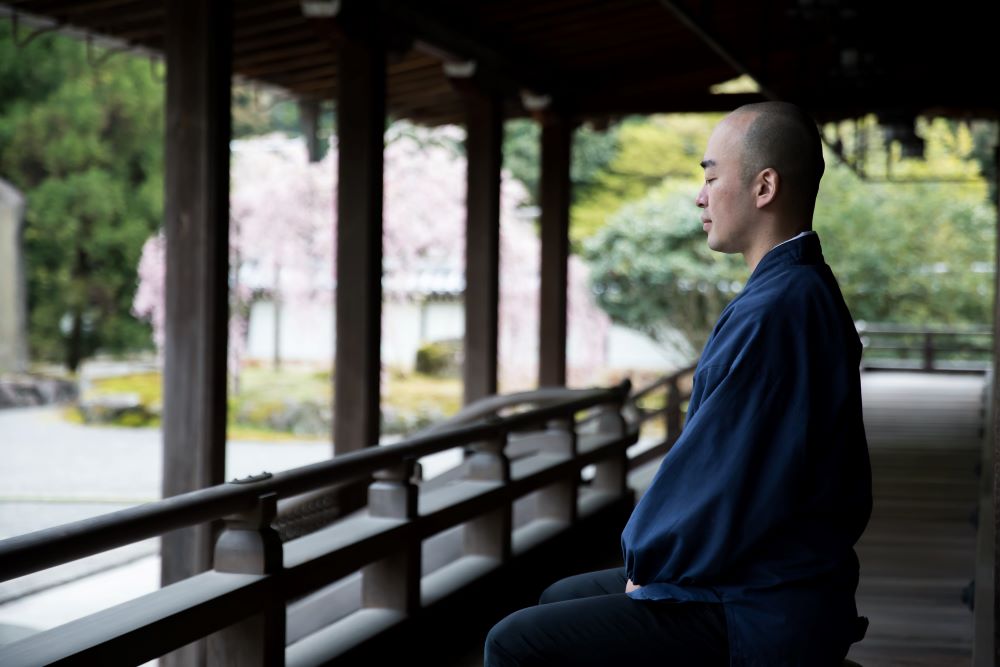
Your Heart
“The Concept of Muda”


